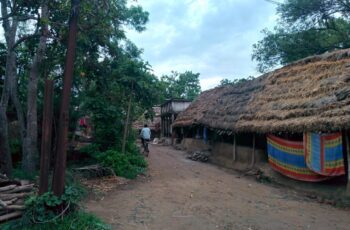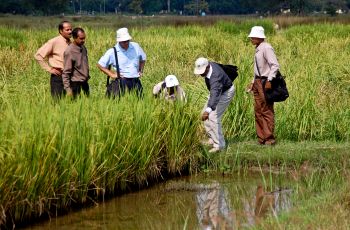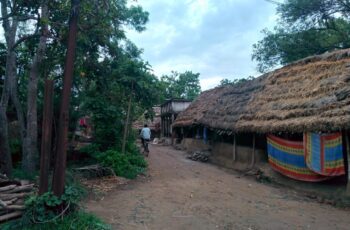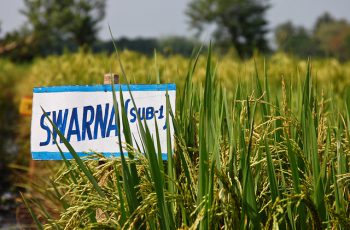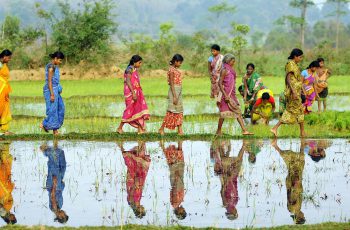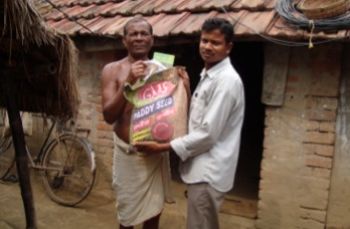Stress-Tolerant Rice in India
Informed by evidence of impact, Government of India scales improved rice variety in efforts to reach ten million farmers
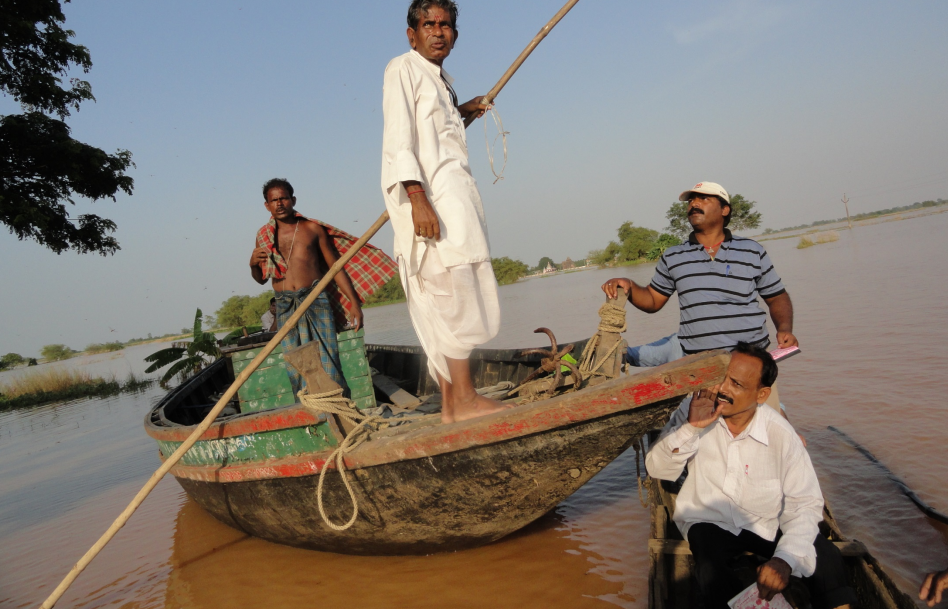
Agriculture is a critical source of income for much of the world’s poor. Smallholder farmers often face unpredictable weather shocks like droughts or floods that can threaten their livelihoods, throwing them into poverty and discouraging them from investing limited resources in their unprotected fields. In dry areas of India, farmers cite drought as the largest risk to agricultural production, while in flood-prone parts of the country, over 4.8 million people are exposed to river flood risk each year.
CEGA researchers Alain de Janvry and Elisabeth Sadoulet—in collaboration with co-author Kyle Emerick, as well as Manzoor Dar of the International Rice Research Institute (IRRI)—tested an IRRI-developed crop variety (Swarna Sub1) to identify how its capacity to withstand submergence during flooding could protect harvests under real-world conditions. This multi-year collaborative evaluation in Odisha, India demonstrated important agronomic and economic benefits, particularly for the poorest farmers.
The study found that yields of this flood-resistant rice variety were as good as those of regular varieties under normal conditions and superior during floods extending up to two weeks. Feeling protected against flood-related risk led farmers to invest more in their farms—by cultivating more land, applying more fertilizer, and using more labor-intensive planting techniques—which increased their yields every year when there was no flooding. Farmers’ revenue increased by INR 2,969 (approximately US$47) per hectare relative to farmers who did not receive Swarna-Sub1 seeds. This effectively doubled farmers’ expected gains: first from the yield-protective benefits of the improved seed itself, a shock-coping effect, and second an equal benefit reaped from their own willingness to invest in more productive practices given their harvest would be protected from flooding, a risk-management effect. Importantly, they found that marginalized farmers from Scheduled Castes and Scheduled Tribes disproportionately benefited from the technology, given that their plots had been relegated to low-lying, flood-prone lands through a long historical process of social marginalization.
IRRI cites this research as a key contribution to the Government’s decision to invest heavily in the scaling of improved rice varieties. For example, ORISEED, the Odisha State Seeds Corporation, significantly increased its production of improved seeds including Swarna-Sub1 from 300 mega tons in 2012 to more than 6,000 mega tons in 2015. CEGA researchers remain committed to identifying successful interventions that facilitate farmers’ last mile access to and adoption of such profitable and resilient technologies.
